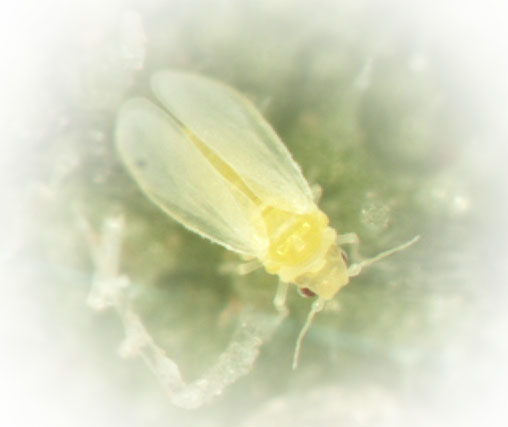
|
|
|
|

|
|||
|
|
|||
Now that the produce season has begun, one of the first pests you’re likely to encounter
is adult whiteflies. However, thus far, adult numbers have been surprising light
on fall melons compared to previous years. Whitefly populations sampled in our untreated
experimental plots during the last week in August at the Yuma Ag Center, show that
adult numbers are the lowest we’ve observed in August since 2008 (see graph below).
However, several melon fields in the Wellton/Roll were found to have very high numbers
this past weekend. In each case, the fields with high adult numbers were either
adjacent to or within a ½ mile of cotton that had not defoliated yet. Once the cotton
is defoliated, whitefly movement generally declines. Nonetheless, you can bet whiteflies
will eventually show up in one of your fields. It is important that PCAs pay particular
attention to early whitefly control on their newly planted produce crops. Prolonged
feeding by heavy numbers of adults on seedling lettuce/cole crop plants can cause
stunted plant growth. If you observe honeydew on leaves in the absence of nymphs
then there are way too many adults on the seedling plants. There are likely too
many eggs being laid as well. PCAs have a few options for effective residual control
of adults, but good knockdown can be achieved on lettuce and cole crops with combinations
of 1) pyrethroids tank-mixed with Orthene, 2) Venom, Assail, Scorpion (neonicotinoids),
3) Exirel (diamide), and 4) the newly registered Sivanto (buteolide). All of these
products will provide 3-7 days or adult knockdown. To assess adult control under
heavy migrations, try monitoring young leaves for the presence of light-colored
eggs (newly laid) using a hand lens. Absence of newly laid eggs can be an indication
that adults are not actively feeding on leaves or are dying before they can lay
eggs. Furthermore, allowing adults to remain unchecked on small plants generally
results in the development of large nymph populations that can cause significant
growth/yield reductions in all produce crops. It is strongly recommended that growers
apply a soil insecticide on lettuce and cole crops throughout September, and if
the weather remains warm into mid-October. Soil applied imidacloprid (0.38 lbs.
AI/ac) (e.g., Alias 2F-24 oz; Wrangler 4F-12 oz; Admire Pro- 10.5 oz) can provide
control through thinning stage. Verimark applied at 13.5 oz/ac can provide excellent
control of nymphs when applied at planting similar to the neonicotinoids to lettuce
and cole crops. Once plants get larger, products like Movento, Exirel, Venom, Scorpion,
Assail, Knack and Courier/Vetica can provide effective control of nymphs. For more
information on whitefly biology, management and insecticide alternatives see these
reports:Whitefly Management in Fall Produce-2015 and Insect Management on Desert Vegetables and Melons: Whitefly.

Adult Whitefly
Remember, When in Doubt . . . . . “SCOUT”
Click picture to listen to John’s update
To contact John Palumbo go to: jpalumbo@ag.arizona.edu |
|||
| Back | |||
|
For questions or comments on any of the topics please contact Marco Pena at the Yuma Agricultural Center.
|
|||
|
Home |
Cotton | Veggies |
Forages | Grains
| Citrus |
Crop x Crop Insects | Diseases| Weeds | Pesticides | Economics | News | Weather | Research | Photos | Contacts | General Info. Copyright © 2001 University of Arizona, College of Agriculture and Life Sciences Webmaster: Al Fournier (acis@ag.arizona.edu) |
|||
